How to Maximize Fuel Efficiency, Part III
Full Displacement Yachts
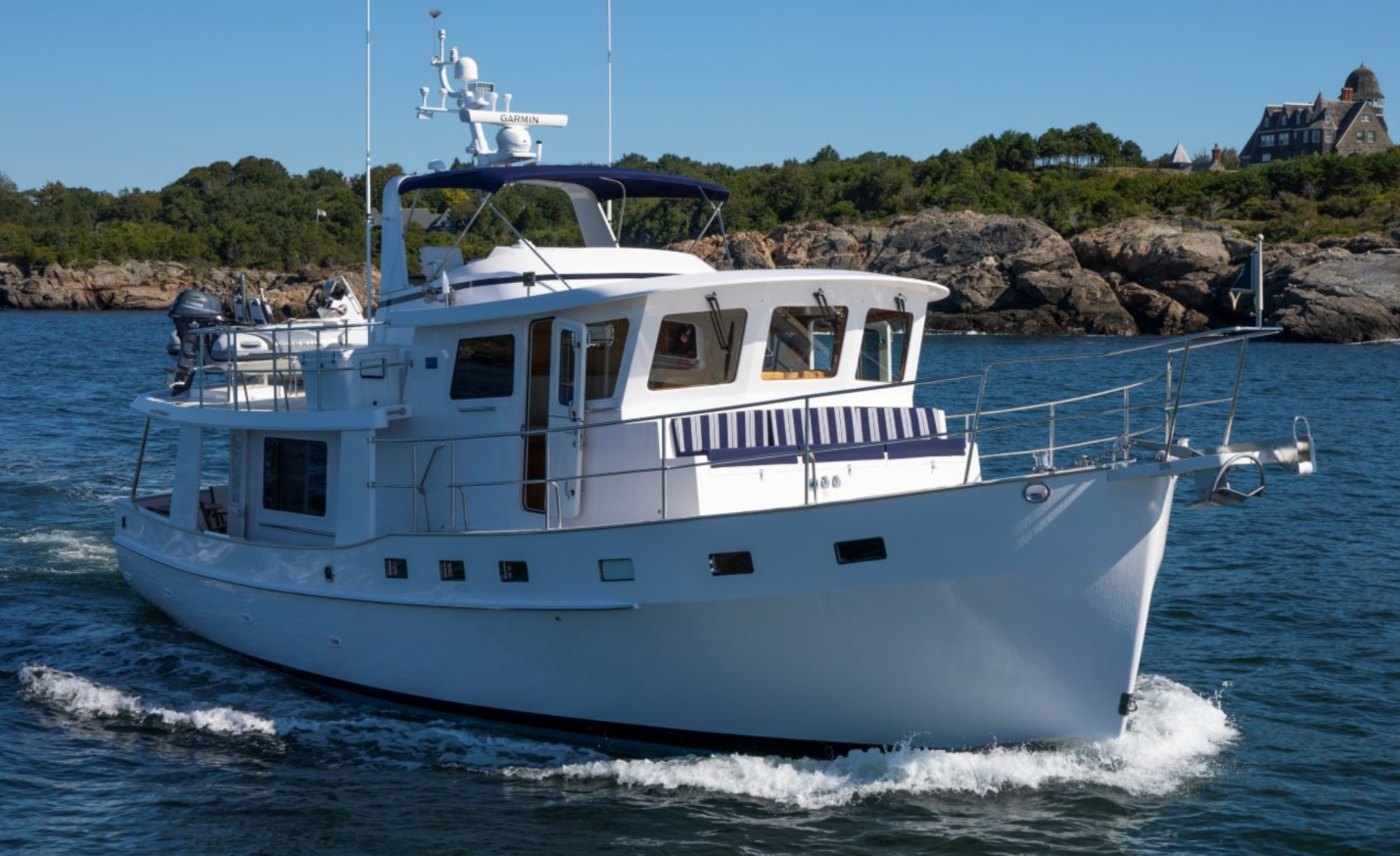
The cost of fuel can be significant for yacht-class inboard boats, even for owners with plenty of disposable income. Just as importantly, excess fuel use limits the range of any yacht, putting longer passages or ventures to ports without dependable fuel supply out of reach. That is why people who want to do serious long-distance cruising, including trans-oceanic crossings, choose full displacement vessels.
While lots of mass requires lots of power and therefore lots of fuel to move, by carefully matching the horsepower of the propulsion system to the displacement of the boat and reasonable speed desired, low fuel consumption can be achieved.
Full Displacement Hulls

Full displacement recreational yachts are most frequently designed in “trawlers” or Long Range Cruisers (LRC). They have deep drafts and relatively high weight to give them strength, stability and lots of creature comforts.
Some have massive lead keels adding thousands of pounds of weight to the boat to help them stabilize in rough seas. The Krogen 48 AE, for example, has a 4500-lb (2,041 kg) lead ballast in her belly, so not surprisingly she draws 5’ (1.52 m). Total weight is about 56,450 lb. (25,605 kg).
So long as these yachts are run at appropriate displacement speeds, they deliver impressive economy. In the Krogen 48 AE, power is a single 200-hp John Deere, and her range is an amazing 4,730 NM at 6 knots with the 1,000 gallon tankage according to the manufacturer. Even at 9 knots, she can travel 1,390 NM between fill-ups.
Full displacement hulls can never plane no matter how much power is applied. They are restricted to "hull speed" -- a theoretical displacement hull speed that is calculated by the formula: velocity in knots = 1.34 x the square root of the waterline length in feet. Basically, the longer the waterline length of the boat, the greater the hull speed absent other factors.
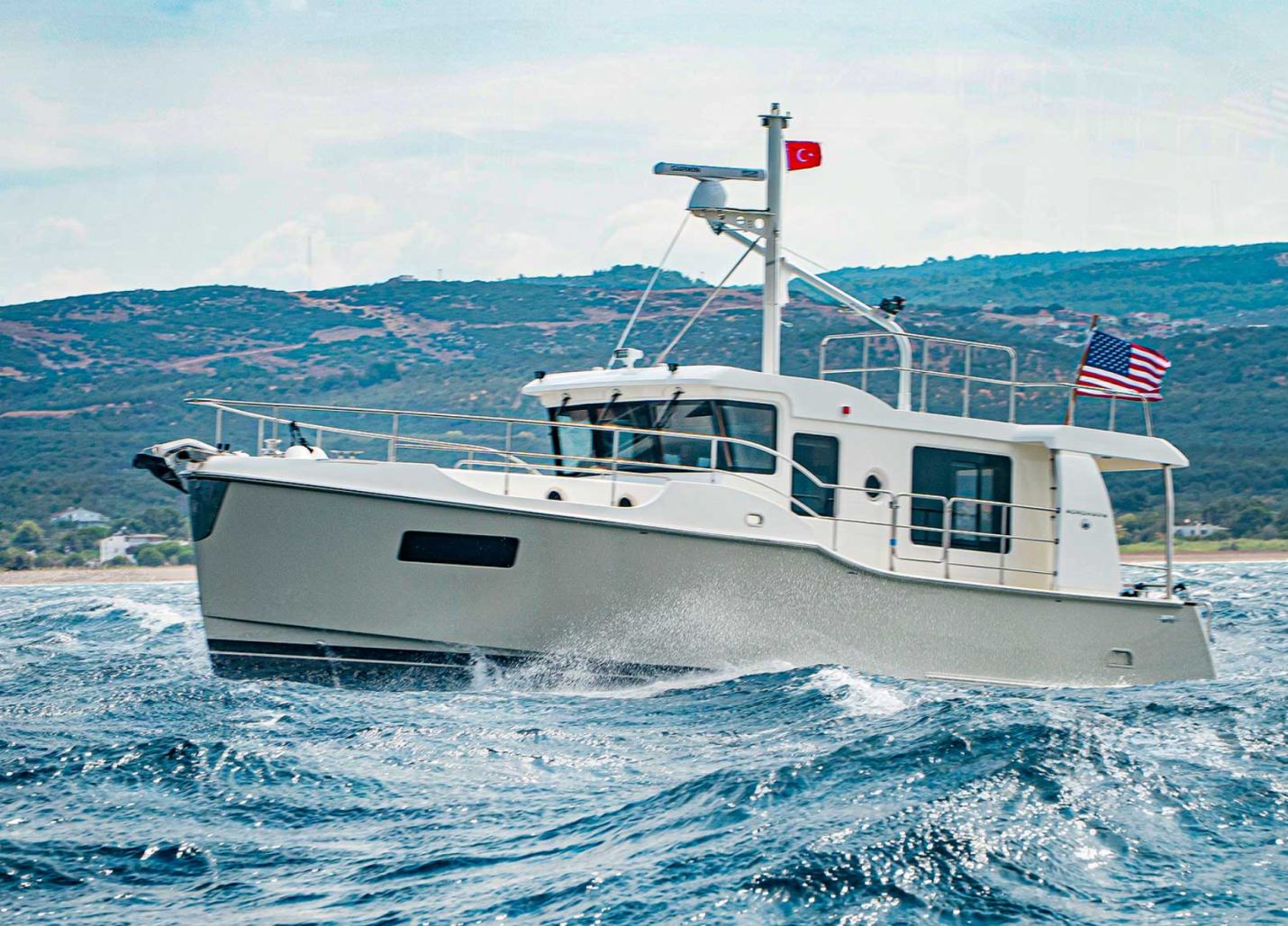
Typically, on a displacement vessel in the 55'-65' range, maximum hull speed is theoretically 9 or 10 knots, but in actual practice, a factor of 1.2 or even 1.1 times the square root of the LWL is more in line with economical fuel consumption. To cruise efficiently with a vessel of this LOA, speeds of 6-8 knots are usual. Go any faster than this and fuel consumption will rise sharply.
Full displacement yachts have deeper draft than semi-displacement and planing hulls of similar parameters, which makes them less suitable for exploring shallow waters. Nevertheless, with careful navigation and modern chartplotters, coastal cruising along the Eastern Seaboard and through the Bahamas is accomplished every year by trawlers and long range cruisers.

Maximizing Fuel Economy in Semi-Displacement Hulls
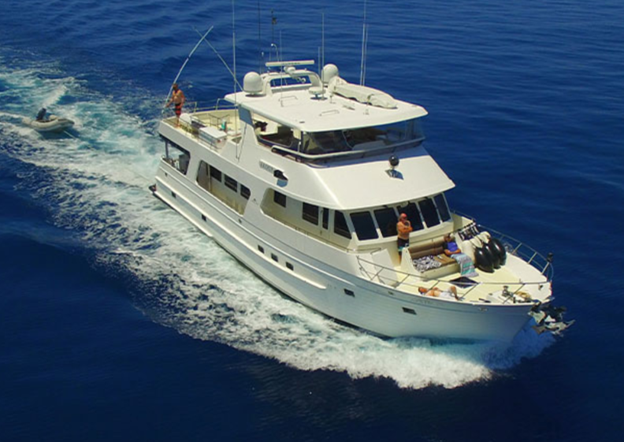
Some trawlers and LRC’s are designed and power to achieve speeds typically from 18 to 22 knots. These speeds can be attained by having flatter bottom sections aft, hard chines, and high horsepower twin diesels. Some builders offer boats with these capabilities because many American consumers have always demanded speed – even in trawlers -- for fear of being caught in a storm, or out of impatience with displacement-speed cruising.
Since virtually all quality trawler builders design and construct their vessels to handle rough seas, in most cases the owners need not have to “out-run” a storm in the first place because their boat can handle it. Secondly, the last 20 years with ubiquitous weather satellites in orbit, modern forecasting, and inexpensive reporting services, there is little reason for anyone to be caught unawares of approaching weather.
Semi-displacement hulls can still be operated at or below their theoretical hull speeds and achieve remarkably low fuel consumption. However, instead of their engines being run at 60-80% load in the case of full displacement vessels, their high-hp engines may be run at 15-20% load. Doing this for a prolonged period of time can causing “cylinder glazing” which can lead to performance and maintenance problems. Boat owners with high horsepower engines who want to run mostly at displacement speeds should consult their engine maker for professional advice on how to operate their engines.

The hard chine hull of a semi-displacement vessel is inherently more stable in beam seas than a rounded bottom full displacement hull in some cases. On the other hand, hard-chined boats have a quicker roll moment and can jerk, whereas round-bilge boats have a longer, and smooth roll moment. Pick your poison. The advent of gyro stabilizers pretty much solve the roll problem at anchor.
Fleming, Grand Banks, Ocean Reef, Marlow and others build archetypical semi-displacement yachts, famed both for their seakeeping abilities and their relatively fuel-stingy ways on twin diesel power.
While these yachts have excellent range at displacement speeds, they also do relatively well at planing speeds. For example, a Grand Banks 54 BoatTEST tested with 2 x 725-hp Volvo Penta D11’s got 3.4 mpg at 7.4 knots idle speed for a range over 2,400 NM. On plane, fuel use was predictably higher and range lower. At both 1500 rpm and 14.4 knots, and 1750 rpm and 18.9 knots she got 0.7 mpg. The range was around 500 NM at each speed.
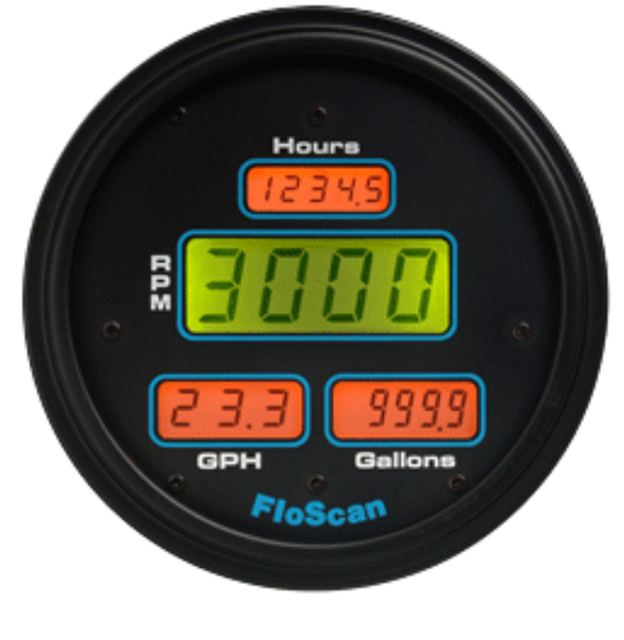
Propping Right
Whatever the hull design, being correctly propped also plays a significant role in your boat’s fuel burn. For diesels, at wide-open throttle, you should see a 100 percent load on the engine display, as well as the maximum manufacturer-stated rpm of your engine. If you’re unable to reach that stated rpm, or if you overrun it, then you are inaccurately propped in some way, which means you are not getting the most efficiency out of your vessel.
For new boats, of course, it is the job of the builder to dial-in the right prop geometry. If buying one of the first boats of a new model, make sure adequate testing was done to ensure the right prop.

Whenever you haul out to repaint your bottom or do other annual maintenance, take the time to thoroughly inspect your props and send them out to be reconditioned if they show wear, dings, electrolysis or cavitation burns. Though propellers are expensive, investing in the right pitch and design can usually pay for itself quickly if you use your boat a lot.
Running-gear coatings like Propspeed can assist with fuel savings and efficiency as well by keeping marine growth at bay.
A Clean Bottom is a Must
Keeping your bottom absolutely clean is something every owner must do in order to maximize fuel efficiency. BoatTEST actually experienced a case in which a 70’ (21.33 m) motoryacht did not produce speeds and fuel consumption that its builder – who was aboard at the test – knew the boat was capable of. On the way in from the ocean to the marina, he called his crew and had two scuba divers ready to clean the bottom, immediately after boat docked.
Two hours later, our captain once again took the boat out for performance trials, and the top speed increased a full 2 knots just by having the “scum” (actually micro flora and fauna) scrubbed off the bottom. This is one reason why virtually all boats should use sonic anti-fouling – it keeps the “scum” off the bottom.
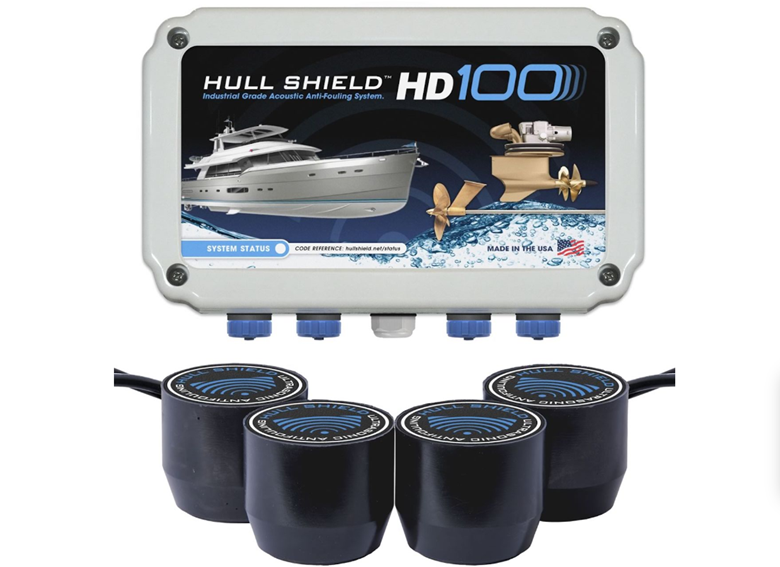
By definition, displacement boats spend most of their time in the water, especially when they don’t move too often, and “scum” build up occurs even with the most potent bottom paint. This growth increases drag and, in turn, decreases fuel economy.
FYI – All boats no matter what their size or type, go slower, burn slightly more fuel with bottom paint applied. Efficiency is further degraded if two or three coats have been applied. Nevertheless, bottom paint is a necessity – even with sonic protection – and for that reason we recommend using a “hard” bottom paint as opposed to “ablative” coatings which slough off to do their work. We’re told ablative pains “self-polish” with use, but at what speed, and how smooth is the bottom really?
If you’ve ever been at a boat yard and seen a crew of people dry sanding a racing sailboat’s bottom for hours, you might get an idea of how important it is to have a completely smooth bottom for maximum speed through the water at displacement speeds. In fact, some paint manufacturers make a special paint for racing sailboats to maximize speed.
Engine Maintenance
A well-maintained engine will always run more efficiently. Schedule your maintenance according to the manufacturer’s recommendations and service schedules. Basic maintenance such as keeping your air and fuel filters clean will greatly help with fuel efficiency.
Fuel quality can vary from location to location, particularly if you cruise or fish in out-island type locations or in Central America. It takes only one bad load of fuel to kill your filters. It’s easy enough to keep a sharp eye on the condition of your water separators and its elements. We strongly recommend fuel polishers for folks thinking about long distance off-the-grid cruising.

Experts recommend checking after every trip and changing filters every 80 to 100 hours, regardless of how they look.
Put Your Boat on a Diet
Most yachts have fuel and water tanks that are much larger than what is needed for a day trip, so by keeping these tanks just full enough—plus some “just in case”—can also help your fuel economy. Diesel fuel weighs approximately 7 pounds per gallon, gasoline weighs 6 pounds per gallon, and fresh water 8.4 pounds per gallon. All of this liquid adds up quickly with large tanks. If you’re easing down the ICW, there’s no point in doing so with a full load of fuel. If you’re heading for Kodiak, on the other hand, you’ll probably want to top off.

The old guide of 1/3 for going out, 1/3 for coming back and 1/3 for whatever happens in between is the basic rule of thumb for day trips. On longer trips, let experience (and caution) be your guide. And of course the other uncertainty is what sea conditions you’ll have to deal with. Strong winds and tall head seas can have a dramatic impact on fuel use, so the tankage that normally gets you to the next port may not be enough on any given day.
Take off needless stuff. Boats tend to accumulate “stuff” over time. The older the boat, the more things are aboard that are no longer needed. Lighten the boat as much as possible before a long trip.
Wind and current count, too. Do you need to have your bimini top up? Can you choose a course that is downwind instead of upwind? Take a look at tide and current charts when you plan a trip, and plan to be at certain advantageous places at the right times to boost your fuel economy with the current. This is particularly important in the high latitudes such has British Columbia and Nova Scotia which have especially high and strong tides, or when skirting along the Gulf Stream.
Buy a boat suited to your needs, maintain it well and make yourself well aware of its range capabilities at varying speeds and in various sea conditions and you’ll likely find that your tanks are always “big enough” to do the job.